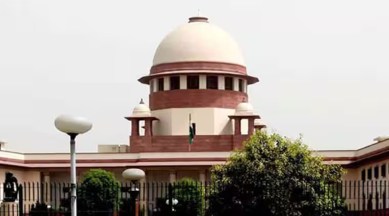Stay updated with the latest - Click here to follow us on Instagram
Supreme Court to lay down guidelines for courts on summoning govt officers
The Centre had earlier submitted a draft SOP containing its suggestions before the SC bench, which is hearing a plea concerning the summoning of two government officials by the Allahabad High Court for alleged contempt of court.

The Supreme Court Monday agreed to lay down modalities on the summoning of government officials by courts, including on their dress, across the county while responding to the Centre’s request to frame a Standard Operating Procedure (SOP).
The Centre had earlier submitted a draft SOP containing its suggestions before the SC bench, which is hearing a plea concerning the summoning of two government officials by the Allahabad High Court for alleged contempt of court.
“We will only lay down modalities for the appearance of officers in court including the dress,” Chief Justice of India D Y Chandrachud said while presiding over a three-judge bench.
CJI Chandrachud said the court had gone through the SOP and said there were certain points in it.
Solicitor General Tushar Mehta said the court was probably referring to two points in the SOP — one which said: “Before initiation of contempt proceedings, prayer for review petition on behalf of the government may be entertained by higher courts”.
And the other which said, “In cases wherein a review (Mehta urged the court to read review as appeal petition) has been admitted against a contempt order of a lower court OR in case of High Court….the lower court should take cognizance of the same and not initiate any related contempt proceedings in the instant matter”.
Mehta also told the bench, comprising Justices J B Pardiwala and Manoj Misra, that these can’t be part of SOP. “Obviously that can’t be in the SOP. That is the discretion of every court… How to exercise that power that can never be the subject of SOP… It cannot be done. I straightaway concede,” he submitted.
Mehta added, “I myself will not insist on some of the issues where Your Lordships have rightly said how to exercise judicial review…that can never be a part of our request for SOP”.
The CJI said, “We will clarify the position and lay down some broad yardsticks for summoning of government officers in court. You have video conferencing etc, so you have other modalities also”.
Mehta said, “There are other suggestions too which I, as an officer of the court, find to be positive”.
Illustrating this, he said that sometimes it is insisted that the chief secretary should be present. “A chief secretary is bound to be in attendance if called by a constitutional court or any court for that matter. But if a joint secretary dealing with the matter comes, he would be in a better position to assist. And the chief secretary remaining out for a day would affect several other works,” he said.
“Ultimately, the CS would be taking a briefing from the concerned secretary of that department,” added CJI Chandrachud.
Agreeing, Mehta said after that three-four officers will have to accompany the chief secretary to answer queries. “Instead, it will be better for the person dealing with the file to come”.
The CJI said Justice Misra had a “valuable suggestion”. “He says you must make a bifurcation between those cases which are pending and those where there has been a judgement passed after adjudication”.
“Matters which are pending, there is no reason then to ask officers to be present before the court unnecessarily because the affidavit can do the task. Once adjudication has taken place and there is non-compliance, then, of course, you are governed by the contempt principles. And we would also lay down some other yardsticks on restraint which should be exercised when summoning officers,” the CJI added.
On what officials wear while appearing in courts, CJI Chandrachud said he had seen a video from a High Court which went viral on YouTube.
Mehta also said he had seen that video too. “He (official) was in a white full-sleeved collared shirt and trousers. But HC possibly felt he should have been in a suit or something,” Mehta said, adding that “generally in our climate, we do not wear suits”.
He said there should not be a problem unless somebody comes in a jeans or T-shirt.
The CJI pointed out officers of the armed forces appear before the court in their civilian clothes if it is a personal matter. “On the other side, if you look at government counsel, they are always dressed in their official attire”.